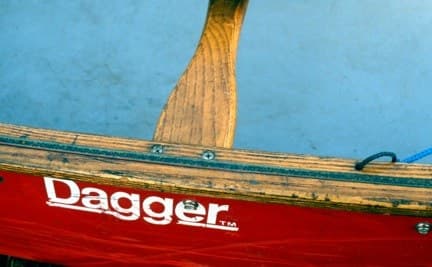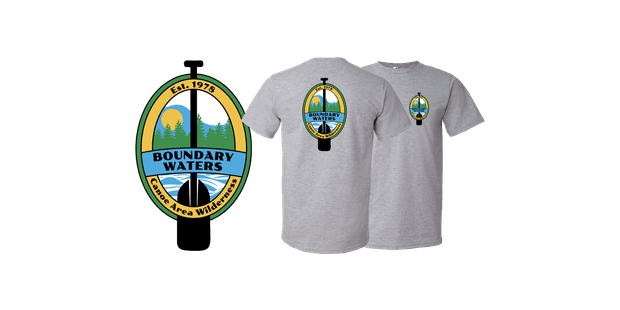Supertune Your Canoe
A lot of hand labor goes into building a good canoe, so manufacturers are constantly alert for ways to streamline production. For example, wooden gunnels, seats and thwarts are pre-cut to fit specific canoe models, and templates are used to locate bolt holes and hardware. Custom orders naturally present problems. For example, I once ordered a high-tech Kevlar canoe with these specifications:
- Install the rear edge of the stern thwart 23 inches forward of the stern seat and the bow thwart 6 inches behind the bow seat.
- Mount the stern seat one inch higher than factory spec, and the bow seat one-half inch higher than spec.
- Double-bolt the yoke and thwarts.
I knew that custom requests like this fouled up production, so I said I was willing to pay extra. But I didn't expect the courteous letter that read:
"Sorry, Cliff, we're up to our ears in production just now and can't honor special requests. We'll double-bolt the yoke for you and ship an unmounted stern thwart and hardware. You can cut it to length and put it where you want it. Our seat hangers are-pre-cut to length; you can easily shorten them."
When the canoe arrived it took me half-a-day to raise the seats and re-mount and double-bolt the thwarts. I figured the canoe maker would have had to charge me at least 100 dollars for this service.

Why should you "fine-tune" your canoe? Because canoes are like cars--the basic model won't fit everyone. For example, a seat that is too low may encourage back problems or create a safety hazard if you capsize while kneeling and catch a foot under the seat frame. On the other hand, a seat that's too high can make the boat feel tippy.
~Get the BWCAW Tee~
With over 1,090,000 acres of wilderness area, the BWCAW is a paddler's paradise.
Manufacturers place seats at a comfortable height for novice paddlers, not for experienced ones who paddle aggressively. It's up to you to make adjustments. Here's where to begin:
TUNING THE SEATS
Many of the best canoes now come with sliding bow seats that solve the trim problem when paddlers of different weights are aboard. But seat height is a personal matter. Here's how to determine the height that's right for you:
Take the canoe out for a spin on quiet water. Try some powerful draw and pry strokes, do some fancy turns. Are you comfortable and in control? Good. Now, raise the seat by half-inch increments (place a one-half inch thick book in a Zip-loc bag and tape it on top of the seat) and repeat the run. Are you still comfortable and in control? If so, keep raising the seat a little at a time until you feel uneasy. You'll know when the height is right for you.
You'll discover that a high seat encourages more powerful paddle strokes and more effortless and accurate steering. Remember though, that if you raise your seat you must lengthen your paddle, and vice versa. The current fatuation with short paddles is mostly a function of the low mounted seats in modern cruising canoes. If you have trouble "J-stroking" your canoe in a straight line, raise the seat to a comfortable height then switch to a paddle that's two to four inches longer than that which you usually use. Also, try a bent-shaft paddle. The bent blade runs closer to the keel line than a straight blade so the canoe requires less directional correction. For comparison, I use a 56 inch straight paddle for rapids and a 54 inch, 12-degree bent-shaft for cruising.
You'll be surprised at the difference these adjustments make!
ADJUSTING THE SEAT RAKE
A dead level seat is best if you always sit in your canoe. Kneelers will want a seat whose leading edge is dropped about one-half inch down. The angled attitude prevents the edge of the seat from digging in to your buttocks when you kneel. I commonly alternate between sitting and kneeling so I prefer a less ambitious quarter inch drop. You'll have to experiment to learn what angle is best for you.
KNEE PADS
If you kneel in your canoe, you'll want to install knee pads. You can buy molded knee pads at canoe shops or cut them from a closed-cell foam sleeping pad (camping mattress). You can adjust your kneeling position by raising or lowering your knee pads. Thick knee pads raise your buttocks and reduce strain on your ankles. Thin ones do the opposite. Try this procedure before you glue knee pads in place:
- Adjust your seat to the desired downward rake, then place your canoe on grass or a carpet.
- Cut some identical "knee-pad sized" pieces of closed-cell foam and set them aside.
- Kneel in the canoe, then stack pads under your knees, one at a time, until the height feels right. Note that the angle of your legs and ankles change as you increase the pad thickness. When the height is right, glue the pads together - and into the canoe - with Weldwood™ waterproof contact cement.
FOOT BRACES
When rapids loom ahead, you'll want to kneel in your canoe, not because kneeling lowers your center-of-gravity (it doesn't very much), but because the "three point" body contact (two knees and your buttocks) allows you to roll with the rapids, like a jockey on a well-trained horse.
However, it's not practical to kneel in a modern cruising canoe that has a narrow bow which limits the spread of your knees. Here, the best plan is to sit low and brace your feet against a bow flotation tank or a makeshift foot brace.
The stern paddler, however, will want a genuine footbrace. The simplest type consists of two wood rails fiberglassed to the floor or sidewalls of the canoe. An aluminum tube, flattened at the ends, is screwed to the rails.
If you question the value of making these nit-picky modifications to your canoe, go drive a car with an adjustable Ricaro seat. You'll find that you're more in control and refreshed when you have a perfect driving position.
A WORKING CANOE NEEDS FIVE THWARTS
A typical white ash canoe thwart weighs about two pounds, so canoe builders try to save weight by using as few of them as possible. Turn-of-the-century canoes had five thwarts--a center yoke, two "mid-latitude" thwarts, and a short thwart behind each deck. The center thwart or yoke is an absolute must; the others increase hull stiffness and help the canoe maintain its shape.
Every pound counts on a portage, and by eliminating the four "unnecessary" thwarts, you can reduce the weight of a typical canoe by around five pounds. Essentially, you get a 60 pound canoe for the same price as last year's 70 pound canoe. You also get "marginal strength" and a hull that may stress crack or lose its shape over the years.
A working canoe needs five thwarts. Even the short thwarts that are bolted just behind the decks are important because the wooden deck plates they support are attached to the rails with wood screws that can loosen. Deck thwarts also provide strong hand holds for lifting the canoe. However, most canoe thwarts are cut from three-quarter inch thick white ash stock, which is thicker than you need. I power plane thwarts -- but not the center yoke, which carries the whole weight of the canoe on portages -- to half-inch thickness, then I re-install them on the canoe. This reduces the weight of the canoe by about three pounds.
Important: If your canoe doesn't have a short thwart behind each deck, add one!
RE-POSITION THE BOW AND STERN THWARTS
The bow and stern thwarts on most canoes are usually positioned half way between the yoke and ends of the canoe. This arrangement wastes space. Here's a better plan:
- Bolt the bow thwart a "hand's width" behind the bow seat. This stiffens the gunnels near the seat and discourages the seat frame from cracking.
- Two large tripping packs will fit comfortably in the stern compartment of most 17-foot canoes. But if you move the stern thwart back about six inches you can usually free up enough space to fit a third pack--essential for extended trips or to trim the canoe when the bow paddler weighs more than the stern paddler. You'll need to shorten the thwart a few inches so it will fit farther aft in the tapered stern.
Check out the new position of a thwart before you cut and move it. Some people feel claustrophobic if they're too close to a cross member.
BALANCE THE YOKE
Canoe yokes are usually installed on a formula basis, so they're not always accurately located. Frequently, a new canoe is out-of-balance. I like a slightly tail heavy canoe--the bow should rise slightly when the yoke is on your shoulders. A tail heavy canoe can be tamed by tying some light gear into the bow. But, portaging a bow-heavy craft is murder.
Don't be surprised if you have to re-locate the yoke on your new canoe. Manufacturers don't always get it right!
DOUBLE-BOLT THWARTS
The yokes and thwarts of most canoes have a single bolt at each end. This isn't strong enough for a hard working canoe or one that will be portaged very far. Single-bolted yokes and thwarts often twist and split at the ends. The solution is to replace the thick single bolt with two wide-spaced thin ones. Fill the old bolt holes with epoxy before you drill new mounting holes.
SECURE ALL LINES
Every sailor knows that loose lines and a rough sea don't mix. Lining ropes should be stored aboard the craft so securely that they can't possibly come loose in a capsize and wind around your legs. Yet, they should be instantly available on demand. The classic solution is to thread heavy shock-cord through holes drilled in the deck plates and stuff your coiled lines under them. Shock-corded ropes stay put on portages yet stream out, snag free on command.
It takes a full day to super-tune a new canoe, but once the job is done you'll enjoy a new sense of control and comfort. And experienced paddlers who see your tricked out canoe will know you are a "canoeist" not a "canoer".
Cliff Jacobson is a professional canoe guide and outfitter for the Science Museum of Minnesota, a wilderness canoeing consultant, and the author of more than a dozen top-selling books on camping and canoeing. www.cliffcanoe.com
Related Articles
In this video, the team at Austin Kayak show you how to rebuild your keel if you have created a hole…
When Alv Elvestad, owner of Pakboats (www.pakboats.com) invited me to join him and three friends on a…
Experienced wilderness canoe trippers know that small errors can cause big problems. In my previous…



